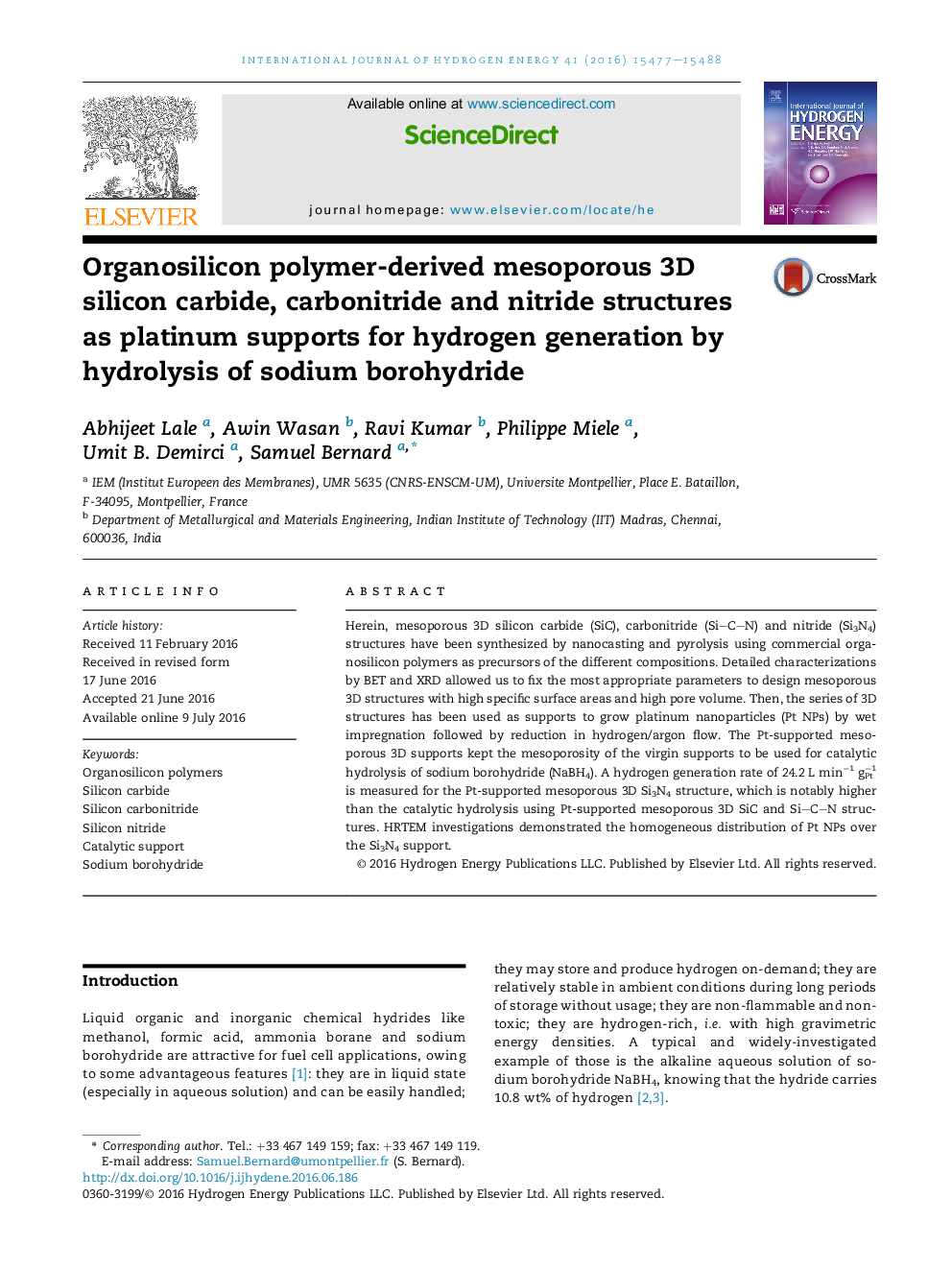| کد مقاله | کد نشریه | سال انتشار | مقاله انگلیسی | نسخه تمام متن |
|---|---|---|---|---|
| 1270428 | 1497391 | 2016 | 12 صفحه PDF | دانلود رایگان |

• Mesoporous 3D SiC, Si–C–N and Si3N4 structures are synthesized with a control pore size and a high specific surface area.
• 3D structures serve as supports to grow platinum nanoparticles for hydrolysis of NaBH4 in harsh conditions.
• High H2 rates are measured for the platinum-supported Si3N4 component.
Herein, mesoporous 3D silicon carbide (SiC), carbonitride (SiCN) and nitride (Si3N4) structures have been synthesized by nanocasting and pyrolysis using commercial organosilicon polymers as precursors of the different compositions. Detailed characterizations by BET and XRD allowed us to fix the most appropriate parameters to design mesoporous 3D structures with high specific surface areas and high pore volume. Then, the series of 3D structures has been used as supports to grow platinum nanoparticles (Pt NPs) by wet impregnation followed by reduction in hydrogen/argon flow. The Pt-supported mesoporous 3D supports kept the mesoporosity of the virgin supports to be used for catalytic hydrolysis of sodium borohydride (NaBH4). A hydrogen generation rate of 24.2 L min−1 gPt−1 is measured for the Pt-supported mesoporous 3D Si3N4 structure, which is notably higher than the catalytic hydrolysis using Pt-supported mesoporous 3D SiC and SiCN structures. HRTEM investigations demonstrated the homogeneous distribution of Pt NPs over the Si3N4 support.
Journal: International Journal of Hydrogen Energy - Volume 41, Issue 34, 14 September 2016, Pages 15477–15488